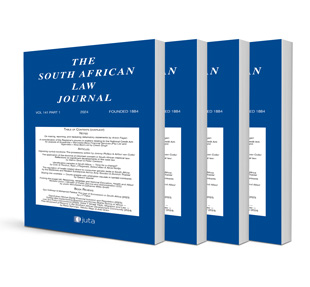
Semi-Public Entities and the Public/Private-Law Divide in South African and Dutch Law
Authors Niels Jak, Frank van Ommeren
ISSN: 1996-2177
Affiliations: Assistant Professor, Vrije Universiteit Amsterdam; Professor of Constitutional and Administrative Law, Vrije Universiteit Amsterdam
Source: South African Law Journal, Volume 133 Issue 1, 2016, p. 102 – 132
Abstract
The central aim of this article is to compare the legal position of semi-public entities in the Netherlands with those in South Africa. The performance of the public function in South Africa and the Netherlands is not restricted to the government. Both states are moving towards privatising services. This trend of privatisation means that public functions are increasingly being performed by private entities. This has resulted in the establishment of a special category of private bodies, which the authors refer to as semi-public entities. This article focuses on the question of the extent to which substantive public-law standards apply to semi-public entities and whether their conduct is susceptible to administrative judicial procedures. Furthermore, this article briefly considers the question to what extent mechanisms of public control and public accountability should be applicable to semi-public entities. The answers to these questions depend on how the public/private-law divide generally is understood. In this piece this fundamental distinction is approached as a multifunctional and context-dependent divide. The legal position of semi-public entities is considered as part of this framework. An important finding of this article is that in Dutch law the label ‘public law’ is used in fewer kinds of cases than in South African law, which is particularly expressed with regard to semi-public entities.